Part 1: Unlocking Customer Insights: Leveraging GA4 Data in BigQuery for Enhanced Customer Segmentation

Welcome to our comprehensive 3-part blog series, where we will dive deep into the world of customer segmentation using GA4 data and leveraging the power of BigQuery Vertex AI. In this series, we will explore the process of unlocking valuable insights from your data to drive data-driven marketing strategies.
Part 1: In-depth Exploration of Google Analytics 4 Data Structure in BigQuery To kick off our journey, we will thoroughly examine the data structure of Google Analytics 4 within the BigQuery environment. Understanding the intricacies of the data is crucial for setting a solid foundation for the subsequent steps. We will take a close look at the event-based measurement model and explore the structure and characteristics of the data. Additionally, we will familiarize ourselves with arrays and structs, which play an important role in organizing and storing data in GA4.
Part 2: Preparation of a Flat Table as Training Dataset Once we have a clear understanding of the data structure, we will proceed to prepare a flat table that will serve as our training dataset. This step is essential to ensure data uniformity and compatibility for further processing. By transforming the complex data structure into a flat representation, we simplify the analysis process and create a cohesive dataset ready for segmentation and modeling.
Part 3: Training and Evaluation of ML Models Using BigQuery ML's K-Means Algorithm In the final part of our series, we will leverage the power of BigQuery ML and utilize the K-Means algorithm for training purposes. This algorithm enables us to identify meaningful clusters within our data, providing us with valuable insights about our customers. We will explore the process of training the models, evaluating their performance, and extracting actionable insights from the resulting clusters. These insights will empower us to drive data-driven marketing strategies tailored to specific audience segments.
Let me start by sharing the process in my mind to create these segments:
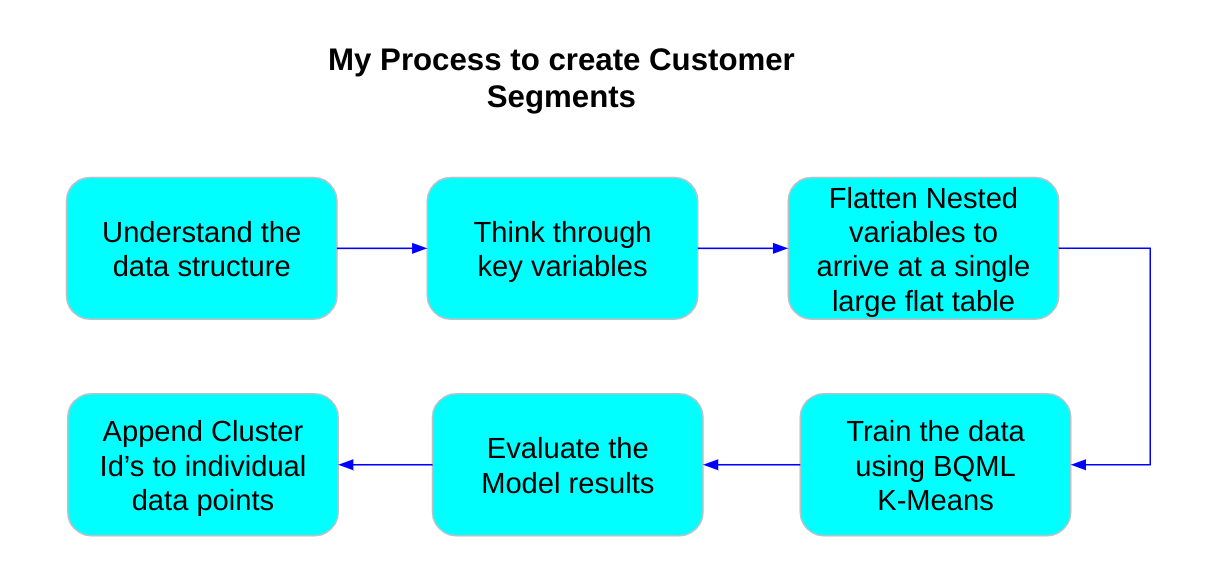
Deep dive into the data structure of Google Analytics 4 in BigQuery
Google Analytics 4 operates on an event-based measurement model, where each row in the data represents a specific event accompanied by additional parameters and properties. In this section, we will take a brief overview of the data, gaining insight into its structure and characteristics.

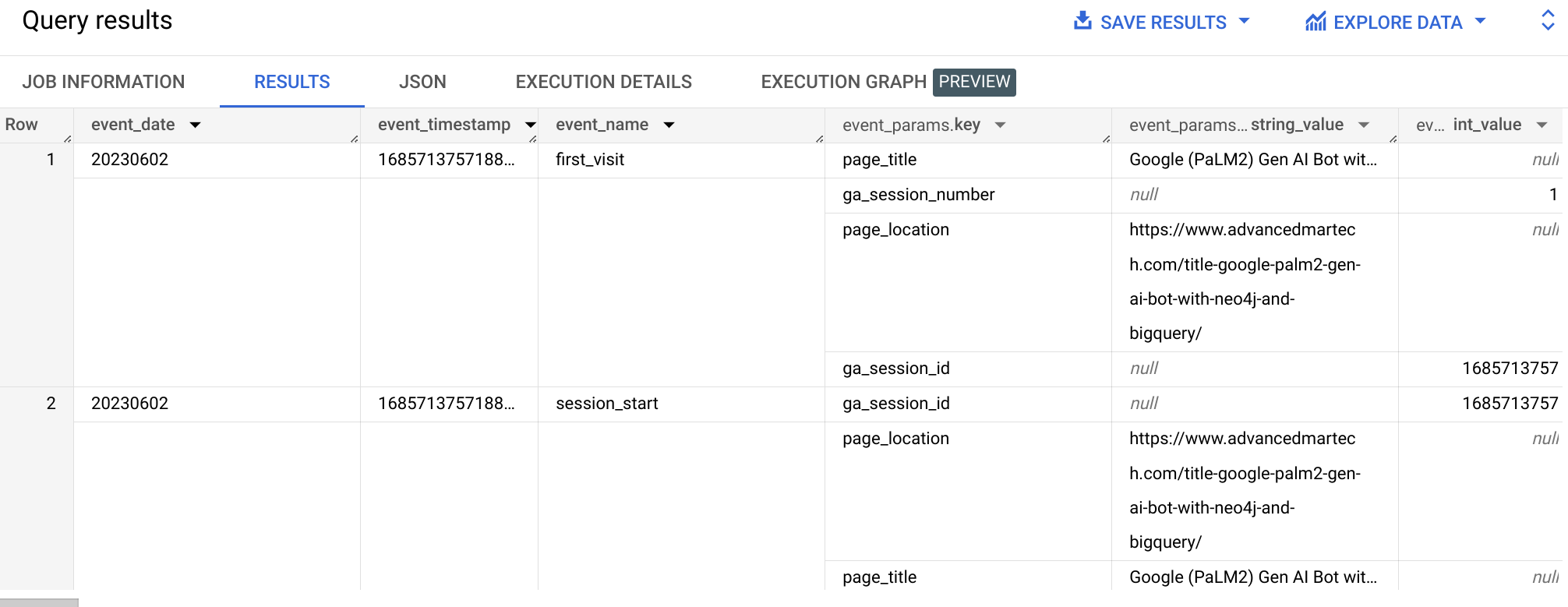
As you can see, there are a number of columns that are either arrays or structs. Let's learn more about each column type.
An array is a data structure that stores a collection of elements of the same data type. The elements of an array are stored in contiguous memory locations, which means that they can be accessed quickly and easily. Arrays are often used to store lists of data, such as lists of numbers, strings, or objects.
A struct is a data structure that stores a collection of elements of different data types. The elements of a struct are stored in separate memory locations, which means that they cannot be accessed as quickly as the elements of an array. However, structs are often used to store data that is related to each other, such as the data about a person, such as their name, age, and address.

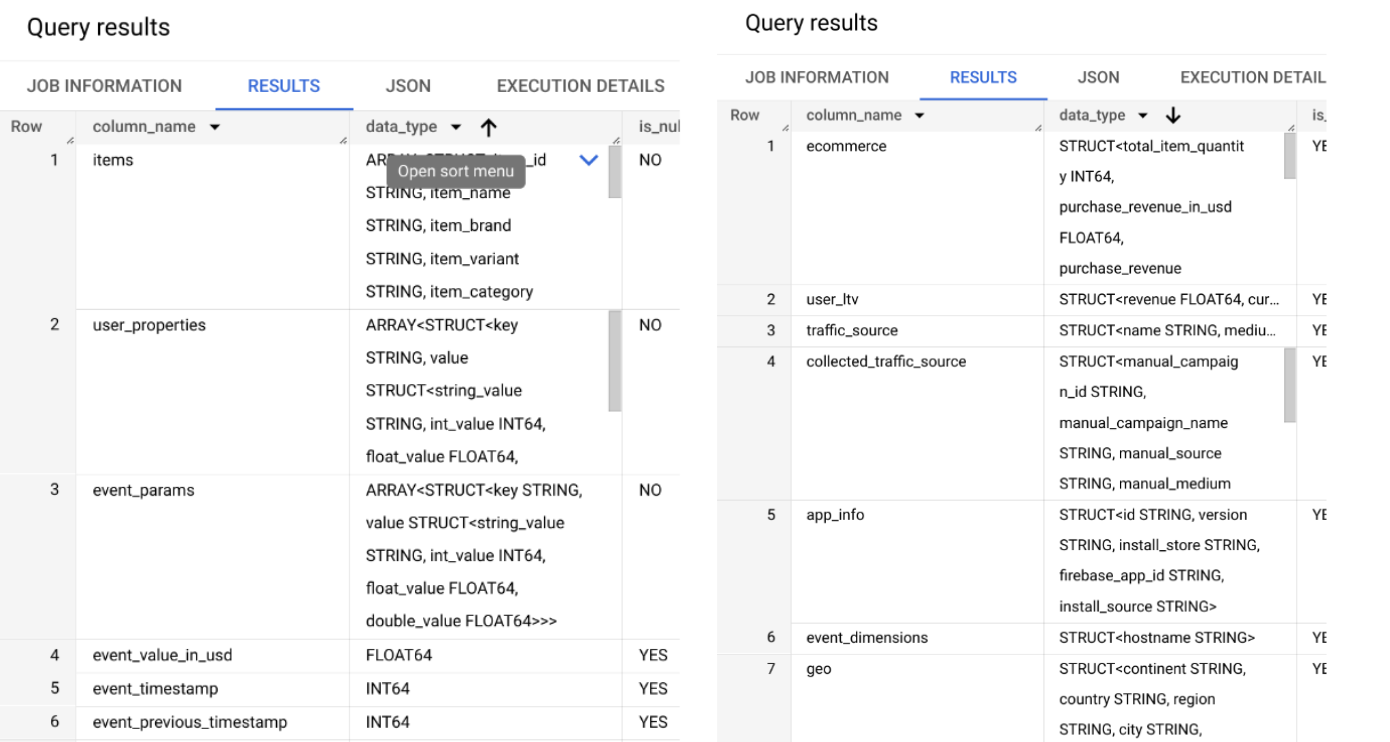
To wrap up Part 1 of our blog series, we have explored the data structure of Google Analytics 4 in BigQuery, gaining valuable insights into its event-based measurement model, arrays, and structs. This foundational understanding sets the stage for our journey towards effective customer segmentation.
In Part 2 of the series, we will focus on the critical step of preparing a flat table as our training dataset. This step ensures data uniformity and compatibility, enabling us to streamline subsequent analysis and modeling. We will delve into various approaches to transform the complex data structure into a cohesive and actionable dataset.
Stay tuned for the next parts of this series, where we will delve deeper into the world of customer segmentation using GA4 data and BigQuery Vertex AI. Exciting practical examples, step-by-step instructions, and actionable insights await you as we unlock the potential of our data to drive impactful marketing strategies.
If you have any questions or want to have any discussion on this topic, please reach out to me at LinkedIn.


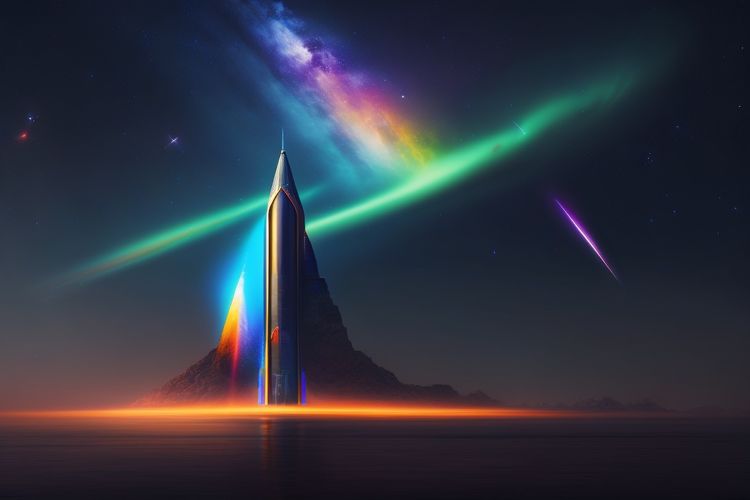

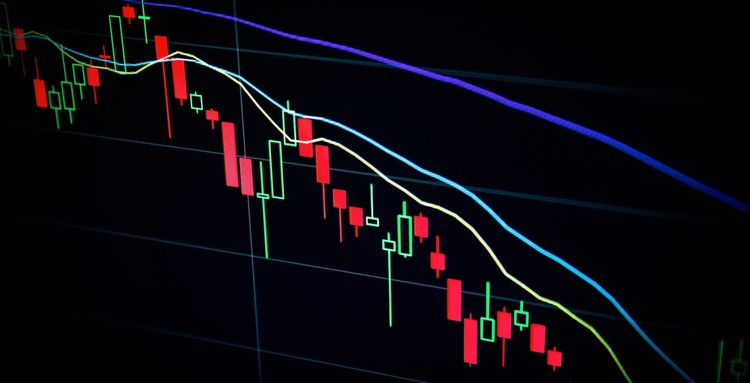
Member discussion